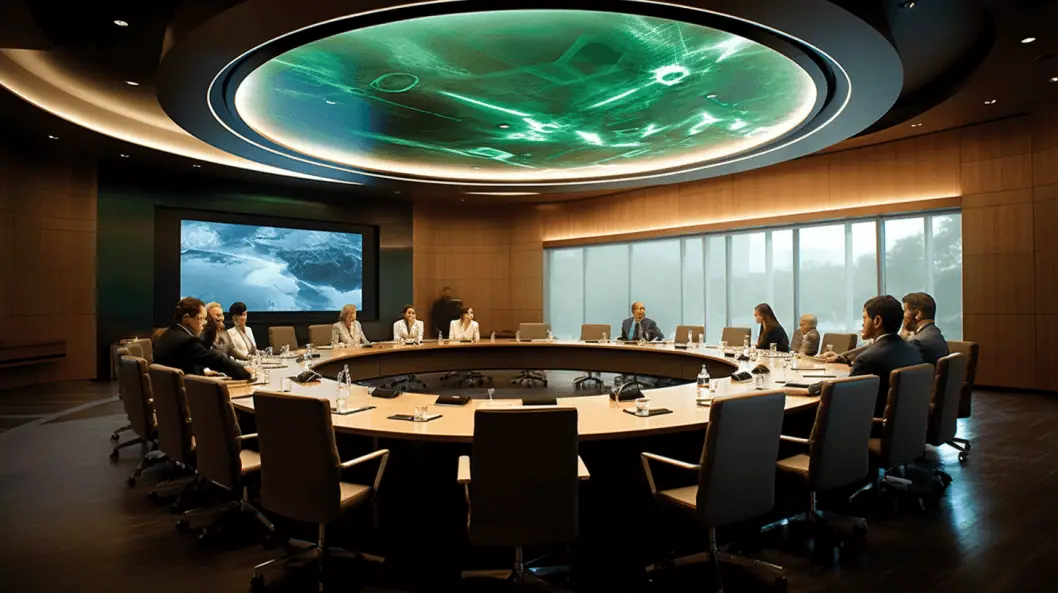In project management, handling risks is crucial to project success. Understanding risk assessment is essential for confronting potential challenges.
Accurate identification of threats, comprehensive examination of their probability and impact, and reassessing strategies dynamically as risks evolve is a crucial skill set. Equally important is the ability to differentiate and prioritize risks, relying not only on their impact and likelihood but also considering qualitative and quantitative factors.
In addition, knowing the right mitigation strategy to apply in each case is vital, be it risk avoidance, reduction, sharing, or retention. Interestingly, it’s not about viewing risks solely as threats.
There’s an appealing side of risk management that considers converting risks into opportunities or ‘positive risks,’ if correctly identified and exploited, can lead to project enhancements.
Understanding Risk Assessment
Acquiring new business acumen demands understanding project management from various vantage points. One often under-discussed but integral part of effective project management is Risk Assessment.
A tool that crosses industries, risk assessment is the determining factor of success across countless projects, no matter their size, scope, or purpose.
Risk Assessment
The ever-critical process of defining and analyzing potential risks associated with a project – can often be the arbiter between timely project completion and crippling overruns.
It’s the internal compass guiding project managers through the volatile seas of uncertainty, enabling them to navigate efficiently, and ensuring that the project reaches its destination successfully.
Not only does a robust risk assessment illuminate potential pitfalls, but it fosters the kind of forward-thinking that distinguishes successful project management.
This pre-emptive strike redefines the adage ‘knowledge is power’ by empowering managers with the foresight to avoid, not just navigate, hurdles.
Successful risk assessment embodies the core tenets of innovation – identifying a need and providing a solution. By earmarking pitfalls, before they morph into blockades, risk assessment constructs paths to project success by the most effective routes possible.
A comprehensive risk assessment also pinpoints considerations for resource allocation – a linchpin in the enterprise of project management.
No risk poses a challenge insurmountable enough that it can’t be tackled with adequate resources – monetary, human, or otherwise. Every project differs. Hence, understanding the specifics through comprehensive risk assessment enables better preparation, ensuring resources are appropriately allocated and, ultimately, costs are controlled.
In the realm of project management, surprises are generally not welcomed. A well-executed risk assessment is key to a transparent project timeline and an informed team.
By conducting a risk assessment, stakeholders are equipped to anticipate delays, resource issues, and potential malfunctions for seamless execution and communication.
There’s a reason why the most successful entrepreneurs and project managers place such high value on risk assessment – because the ability to prepare, adapt, and innovate not only equips professionals to handle any issue that arises but establishes a foundation for consistent project successes.
Risk Assessment cultivates the agility and forward-thinking required in today’s rapidly evolving business world.
Risk assessment is no mere box-checking exercise. It is a crucial facet of project management that, when performed thoroughly, can spell the difference between the success and failure of a project.
If project management is the ship navigating volatile business seas, risk assessment is the seasoned navigator, armed with the tools and foresight to guide it safely to the destination of success.
Flexibility, foresight, and innovation – the very soul of a successful business – exist at the very heart of risk assessment.
Indeed, the future of project management lies here, nested in the folds of strategic anticipation, not post hoc reaction.

Risk Prioritization
Project managers, above all, must excel at problem-solving and possess a keen instinct to navigate risks.
However, not all risks bear the same weight in project management.
Hence, identifying and prioritizing risks are crucial steps towards robust and resilient strategic planning.
But how can we bring efficiency to this process?
Leveraging certain key techniques and strategies can pave the way.
In an economy saturated with disruption, it becomes imperative to adopt a dynamic approach to risk prioritization.
Having a classification system can aid in this direction.
Risks can be categorized by their potential impact, likelihood, and the time needed for management response, among other factors.
This way, managers can prioritize and tackle risks systematically, starting with those that require immediate attention.
Injecting data analytics into this process can add another layer of efficiency.
Analytical tools capable of predicting potential risks based on historical data can ensure a holistic vision and proactive approach.
This not only mitigates potential pitfall exposure but also saves valuable resource allocation.
Embracing technology will not only make risk prioritization easier but will also create a more transparent project landscape.
Utilizing project management software that provides real-time risk assessments and updates can reduce reaction time while enhancing stakeholder communication.
This digital-first approach aligns perfectly with the needs of today’s fast-paced business environment.
Furthermore, cultivating a culture of risk-consciousness within the team can go a long way.
Encouraging all team members to flag potential risks timely can increase the speed of risk detection and response.
Remember, the field-level team members may be the first to spot emerging risks.
Lastly, don’t be afraid of risks, consider them as opportunities.
With every challenge comes the chance to innovate and improve.
Incorporating a forward-thinking mindset in project management will aid in navigating through the project’s risks while fostering a culture of exploration and innovation.
In summary, prioritizing risks is not a one-and-done job.
It requires continuous assessment, agility in response, and an unwavering commitment to drive the project forward, against all odds.
Challenges are inevitable in any venture.
How you prioritize and tackle those challenges will dictate the success story of your project.
Embrace risks today and innovate for a better tomorrow.
Remember, the DNA of a successful project lies in the delicate balance between proactivity and reactivity in risk management.

Risk Mitigation Strategies
Diving deeper into risk mitigation strategies, one thing is clear – an intelligent, strategic approach is essential to successful project management.
It’s no longer enough to acknowledge the possibility of potential risks simply. Instead, savvy project managers leverage advanced techniques and strategies to keep their projects on track.
One crucial aspect of risk mitigation is weighted risk evaluation. Not all risks are created equal, and their varying implications and probabilities require distinct approaches. Creating a multi-tiered system that assigns weight to each risk according to its potential impact can allow smart allocation of resources and quick response times.
Equally essential is the process of regular risk identification and prioritization. This is not a one-and-done part of a project lifecycle but a continuous process.
Risks change, and so should their hierarchical ranking within your project plan. This continual reevaluation maintains a realistic, current project landscape – pivotal for keeping stakeholders informed and aligned.
Technology’s role in risk mitigation is another paradigm we can’t ignore. Data analytics can provide predictive modeling, offering priceless insight into potential risks well before they might arise.
Furthermore, it aids in pinpointing trends or patterns in your project, delivering the ability to proactively address risks and drastically reduce the reactionary time for your team.
Embracing a risk-conscious culture within your project team is also a valuable strategy in risk mitigation. Transparent, regular communication creates an environment where risks are expected, preparations are made, and problem-solving is considered a team sport.
This shift in mentality can make all the difference in how a team confronts and manages risks.
Yet, to see risks strictly as hurdles is a short-sighted approach. Experienced project managers are keen to see risks also as opportunities.
How a team manages and responds to risks can lead to innovation, improved processes, and even new products or services. Thus, an open, exploratory mindset can flip so-called challenges into means of development.
The key to effective risk mitigation is acknowledging its dynamic nature – it’s an ongoing, evolving process. This involves establishing a vigorous risk-identification system, staying updated on risk trends and technologies, and building a culture that not only prepares for risks but welcomes them as opportunities.
The commitment to risk mitigation strategies betters the chances of project success and propels the project team ahead in the change-driven arena of project management.

Turning Risks into Opportunities
Risk assessment and risk management are fundamental aspects of project management. However, the art of transforming risks into innovative opportunities can set apart a good project manager and a transformative one in an increasingly competitive and dynamic business landscape.
Understanding the weighted risk factor is pivotal. Not all risks carry the same potential impact. By incorporating a weighted system into risk assessments, project managers can assign more resources to the management of high-priority risks. This, in turn, allows for resource optimization, reducing redundancy and enhancing productivity.
Moreover, the regular identification and prioritization of risks can result in transformative opportunities. Competition, market fluctuations, fiscal policies – these are just some elements that can affect a project’s momentum.
By regularly assessing these factors, project managers can identify shifts in the landscape and adjust strategies accordingly, steering the project in profitable directions previously unconsidered.
Technology has disrupted various industries and project management is no exception. Tools designed for risk detection, prediction, and management can fortify a project’s resilience, while making stakeholder communication more efficient and transparent.
Adopting technological innovation equips project managers with the ability to respond more rapidly to emerging risks and, in turn, leverage them into opportunities for improvement or even game-changing business strategies.
Promotion of a risk-conscious culture is another transformative element in project management. Encouraging every team member to take an active role in risk identification and management can foster a culture of accountability and collaboration.
A project fortified by a team-wide understanding of potential risks opens doors for collective brainstorming and innovative problem-solving efforts.
One of the most powerful shifts in dealing with risks, however, lies in reframing the perception of risks. Transforming an identified risk from a potential pitfall into an opportunity for innovation or improvement can be the catalyst that propels a venture from mediocrity to success.
This mentality fortifies a positive and proactive response to challenges, thus promoting innovation and constant improvement.
The dynamic nature of risk assessment and risk management is the final piece of the transformative puzzle. Successful project managers understand that risk management is not a one-off activity; it requires constant commitment.
As conditions fluctuate and new details emerge, the risk landscape evolves, therefore requiring a constant revision of strategies and plans.
The shifting world of project management calls not only for traditional risk assessment and mitigation but requires transformative leaders who can recognize risks not as threats but as springboards for innovation and growth.
This mindset, married with technology, a risk-conscious culture, and the adaptive nature of risk management, can prove instrumental in steering projects towards unprecedented success.
In the volatile seas of business, the most resilient and successful projects are not merely those that weather the storms, but those that ride the waves and harness their power to reach new destinations.

Conclusion
Delving deep into the realm of risk management exposes the fascinating universe of strategies, techniques, and approaches available to a project manager. The crux, however, lies not just in understanding these concepts but in being able to effectively apply them.
It is this insightful application of risk assessment, prioritization, mitigation, and conversion of risks into opportunities that makes risk management a powerful weapon in a project manager’s armory.
The ultimate goal is not just to cope with risks, but to exploit them to your advantage. In doing so, one can create an innovative environment that pushes the boundaries of project management and resultantly, paves the way for success.

Chris Ekai is a Risk Management expert with over 10 years of experience in the field. He has a Master’s(MSc) degree in Risk Management from University of Portsmouth and is a CPA and Finance professional. He currently works as a Content Manager at Risk Publishing, writing about Enterprise Risk Management, Business Continuity Management and Project Management.

